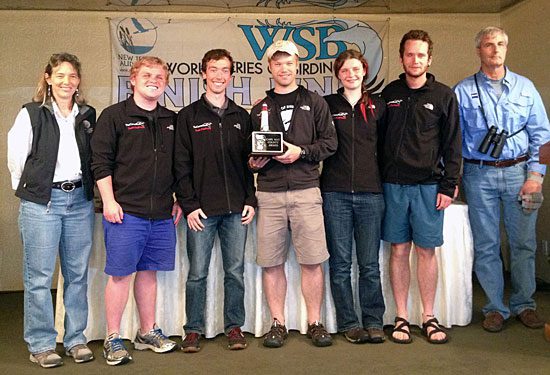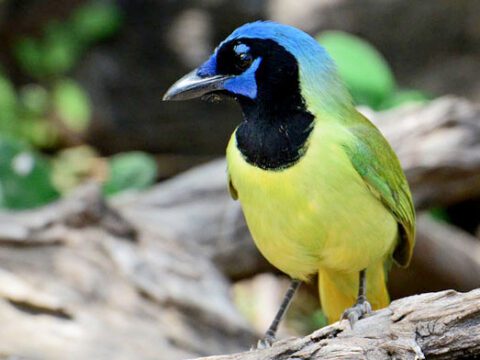Student World Series Team Wins Cape May County With 166 Species
By Pat Leonard May 15, 2013

Imagine standing in a marsh at night with the rain pouring down and wind blowing through the tall grass, masking all other sounds. Imagine standing there for 20 minutes and not hearing a single bird. That’s the way Team Redhead’s World Series of Birding began on May 11 at midnight. Despite the soggy start, these five intrepid Cornell students followed their plan in an efficient, clockwork-like manner and tallied 166 species to capture the Cape May County division championship. At the same time they raised money earmarked for undergraduate research and conservation projects (see video examples).
After that first silent 20 minutes, a Canada Goose broke the ice and the birding got a lot better in the Tuckahoe Wildlife Management Area in the north end of the county. The Redheads then checked off Virginia, Clapper, and King rails, plus Great Horned Owl, Chuck-will’s-widow, and Whip-poor-will.
“Benjamin Van Doren is amazing with night-flight calls,” says team co-captain Ben Barkley “That’s how we got Least Bittern flying overhead and Rose-breasted Grosbeak–our only chance to get those species all day.”
A seawatch at dawn at Cape May Point brought better weather as well as Royal Tern, Red-breasted Merganser, and Black Skimmer. While Andy Johnson, Jack Hruska, and Van Doren scoped the ocean with Teresa Pegan doing the same with binoculars, Barkley watched for migrants and pulled in Bank Swallow and Green Heron.
At Higbee Beach and Hidden Valley, the team scored 20 species of warbler along with a Blue-headed Vireo. Wintering birds that typically would have moved on to their breeding grounds by now helped swell the species total, including Ruddy Duck, Red-breasted Nuthatch, and Pine Siskin.
The breeding birds up north all showed up on cue as midday stops produced key species including Yellow-billed Cuckoo, Yellow-throated Vireo, Summer Tanager, Eastern Meadowlark, and Horned Lark. A quick sweep of expected shorebirds along the Atlantic brought the team to Cape Island where they finished the daylight hours with Lesser Black-backed Gull, Gull-billed Tern, Eurasian Collared-Dove, and a very unexpected Brown Pelican.
Every Big Day team has a nemesis bird, and for Team Redhead this year, that was the Northern Flicker.
Between 8:00 and 11:00 p.m. the Redheads also did well. Johnson and Barkley did a Barred Owl duet that sounded sufficiently enticing to have the real thing respond. During an impromptu stop for screech-owl, Barkley says, “Andy did a perfect whinny and trill and the bird responded. He just nailed it, it was awesome!” That was the last bird tallied for the day, number 166.
At the finish line, the Redheads checked over their list, checked it again, and handed it in. They had to wait for one more county-wide team to turn in its list before finding out they’d won—too tired to whoop and holler but well satisfied with the end result!
“You put so much work in beforehand, studying the songs, holding team meetings, and then you work like crazy during scouting, and you work so hard during the day and to find out you won is just incredible,” Barkley says. “We made sure we ran between every stop—running to the car, running back to the car, we were all out and we worked incredibly well together.”
Thanks to all who donated in support of Team Redhead—and produced such an inspiring performance!


All About Birds is a free resource
Available for everyone,
funded by donors like you






